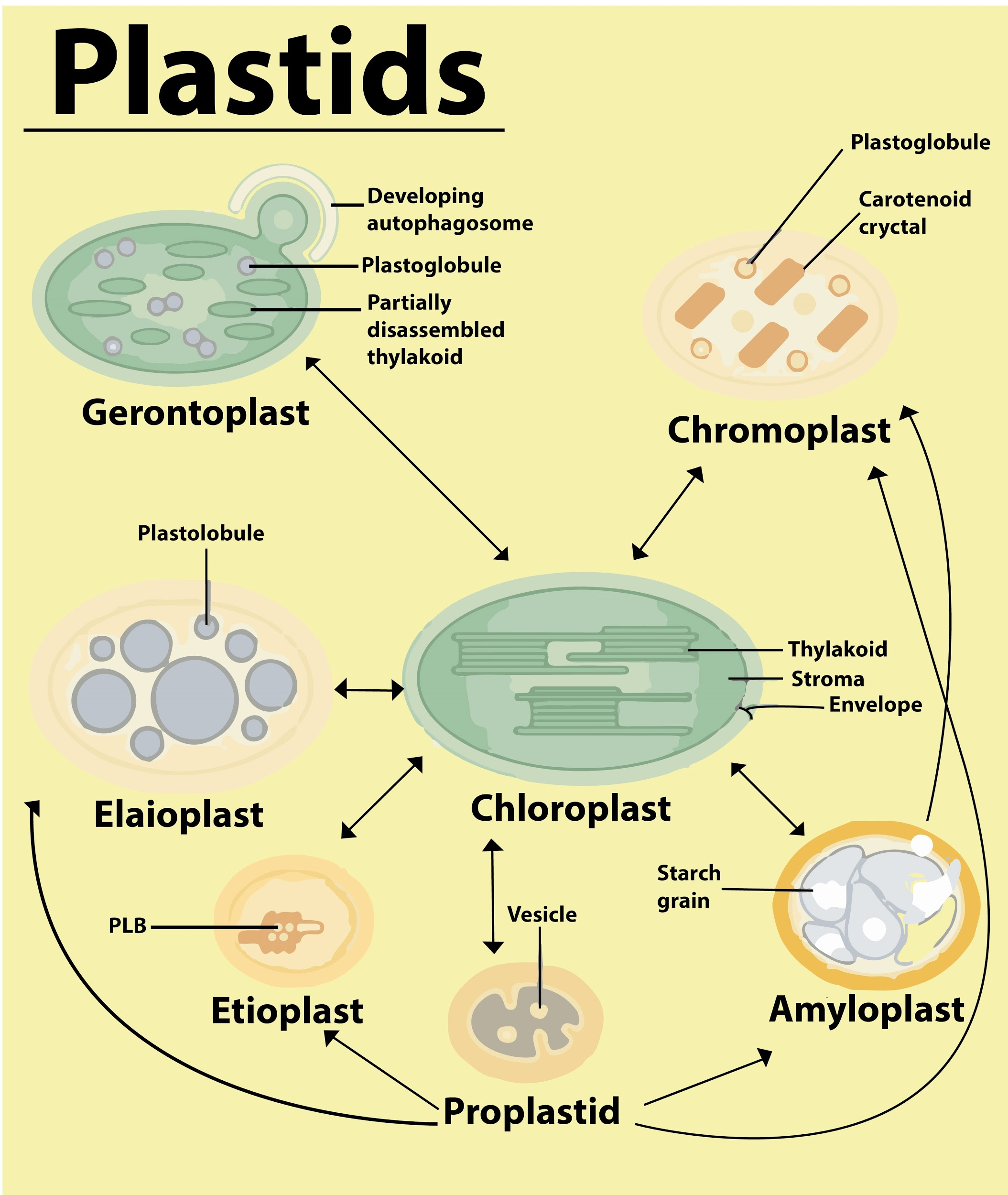
Plastids are found in
(a)All animal cells
(b)Some animals
(c)All plant cells
(d)All plant cells and euglenoids
Answer
425.1k+ views
Hint: Plastid is a double membrane-bound organelle and is involved in the synthesis and storage of food. It is commonly found within the cells of photosynthetic organisms.
Complete answer:
Plastids were first discovered and named by Ernst Haeckel. Plastids are necessary for essential life processes in various organisms, like photosynthesis and food storage.
A plastid can contain different pigments. A plastid that contains green pigment chlorophyll is called chloroplast whereas a plastid that contains any pigments apart from green is called a chromoplast. A plastid that lacks pigments and is involved mainly in food storage is called leucoplast. An undifferentiated plastid is known as a proplastid and may develop later into any of the other plastids.
Additional Information: Different types of Plastids are as follows:
-Chloroplasts: The chloroplasts are probably the most common of all the plastids. These are mainly responsible for photosynthesis. This plastid contains a large number of thylakoids, which is the main site for photosynthesis.
-Chromoplasts: Pigments are stored and synthesized in a plant in the units of chromoplast. These are mainly found in flowering plants, fruits, and aging leaves. Old chloroplasts convert over to chromoplasts. The carotenoid pigments allow for the different colors that are seen in various fruits and the fall leaves. These colors mainly help in attracting pollinators.
-Leucoplasts: Leucoplasts do not contain any pigment and therefore are found mainly in the non-photosynthetic parts of the plant, such as the roots. They mainly synthesize amino acids and fatty acids. A leucoplast can also transform into: An amyloplast that stores starch
An elaioplast that stores fat
A proteinoplast that stores proteins.
-Gerontoplast: Gerontoplasts are basically chloroplasts that are undergoing the aging process. These are chloroplasts of the leaves that are starting to convert into different organelles or are being repurposed during the fall season when the leaf is no longer utilizing photosynthesis.
So, the correct answer is 'All plant cells and euglenoids'
Note: Plastids are the main sites of manufacturing and storing important chemical compounds that are used by the cells of plants to carry out different functions. Additionally, like mitochondria, plastids have their own DNA and ribosomes. Hence, they are also used in phylogenetic studies.

Complete answer:
Plastids were first discovered and named by Ernst Haeckel. Plastids are necessary for essential life processes in various organisms, like photosynthesis and food storage.
A plastid can contain different pigments. A plastid that contains green pigment chlorophyll is called chloroplast whereas a plastid that contains any pigments apart from green is called a chromoplast. A plastid that lacks pigments and is involved mainly in food storage is called leucoplast. An undifferentiated plastid is known as a proplastid and may develop later into any of the other plastids.
Additional Information: Different types of Plastids are as follows:
-Chloroplasts: The chloroplasts are probably the most common of all the plastids. These are mainly responsible for photosynthesis. This plastid contains a large number of thylakoids, which is the main site for photosynthesis.
-Chromoplasts: Pigments are stored and synthesized in a plant in the units of chromoplast. These are mainly found in flowering plants, fruits, and aging leaves. Old chloroplasts convert over to chromoplasts. The carotenoid pigments allow for the different colors that are seen in various fruits and the fall leaves. These colors mainly help in attracting pollinators.
-Leucoplasts: Leucoplasts do not contain any pigment and therefore are found mainly in the non-photosynthetic parts of the plant, such as the roots. They mainly synthesize amino acids and fatty acids. A leucoplast can also transform into: An amyloplast that stores starch
An elaioplast that stores fat
A proteinoplast that stores proteins.
-Gerontoplast: Gerontoplasts are basically chloroplasts that are undergoing the aging process. These are chloroplasts of the leaves that are starting to convert into different organelles or are being repurposed during the fall season when the leaf is no longer utilizing photosynthesis.
So, the correct answer is 'All plant cells and euglenoids'
Note: Plastids are the main sites of manufacturing and storing important chemical compounds that are used by the cells of plants to carry out different functions. Additionally, like mitochondria, plastids have their own DNA and ribosomes. Hence, they are also used in phylogenetic studies.

Recently Updated Pages
Master Class 11 Economics: Engaging Questions & Answers for Success

Master Class 11 Business Studies: Engaging Questions & Answers for Success

Master Class 11 Accountancy: Engaging Questions & Answers for Success

Master Class 11 English: Engaging Questions & Answers for Success

Master Class 11 Computer Science: Engaging Questions & Answers for Success

Master Class 11 Maths: Engaging Questions & Answers for Success

Trending doubts
Why was the Vernacular Press Act passed by British class 11 social science CBSE

Name the nuclear plant located in Uttar Pradesh class 11 social science CBSE

What steps did the French revolutionaries take to create class 11 social science CBSE

One Metric ton is equal to kg A 10000 B 1000 C 100 class 11 physics CBSE

How did silk routes link the world Explain with three class 11 social science CBSE

Difference Between Prokaryotic Cells and Eukaryotic Cells




